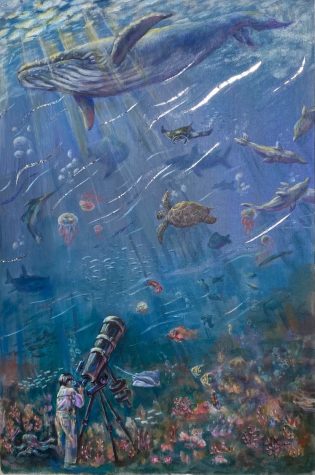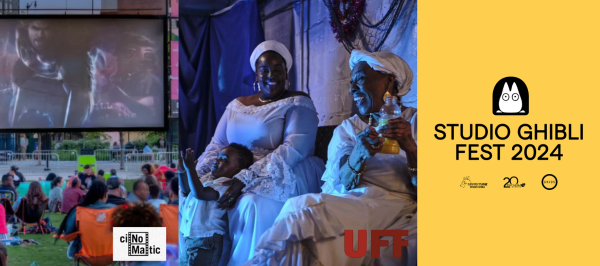Rise of AI generated art concerns artists
Recent popularity of AI programs poses questions and threats to authentic art
Sophomore Seoin Lee expresses her creativity and emotions through her art, taking pride in the time and effort she puts into her passion. The drawing was created using colored pencils.
Recently, artificial intelligence technologies have gained increasing attention, spreading rapidly through social media platforms like TikTok. There are now dozens of different AI art generators on the internet, with prominent tools being Midjourney, Stable Diffusion and DALL-E.
“AI art has actually been around for a while, it’s just that there was [a rise in] popular media like the “Avatar” series and alternative culture very recently,” said sophomore and studio art student Seoin Lee. “I think that’s why [AI art] is explored a lot more nowadays.”
In addition to the growing popularity of digital artwork styles, a main reason for the growth of AI art is its accessibility and quick process times. Just 10 seconds after inputting a simple prompt of their choice, a user can receive a high quality image created by AI.
“AI art has definitely been used and talked about more recently, my students actually came to show me some of the generators they found online,” Digital Art and Photography teacher Allison Dreon said.
However, these favorable traits of speed and accessibility pay a high price for real artists.
“[AI art] is definitely going to affect more like the middle or lower level of artists who do commissions for money,” said senior AP Art student Erin Scmidt. “Because AI art is so much more accessible than commissions, these artists are basically losing their jobs.”
The worries of artists revolve around not only economic struggles, but also how AI art could diminish the standard of art quality for all, altering the definition of art forever.
“The time and practice humans put into artwork are not just necessary, but they make the art what it truly is,” Seoin Lee said. “But on the computer, you can just generate literally anything, and they don’t take the extra time and effort to create stuff. [That makes] just using the computer lose the meaning of the actual artwork.”
AI generated art has been further criticized after it was revealed to be built upon artworks of real artists, many of whom did not consent or were even informed. Thousands of artists have expressed frustration at the news that AI art generators have been trained by millions of human made images.
“AI image generation itself begins with collecting data from other artists on the internet and compiling them as a resource,” senior AP Art student Cherry Lee said. “That’s honestly kind of scary, and in a way, it’s plagiarism, which is definitely not accepted in the art community.”
Many artists, especially those of younger generations, see AI generated art as a threat to not only their own futures but the fate of art itself.
“I know some people have compared AI art to photography, saying how when photography was first invented people were concerned for the earnings of artists,” Cherry Lee said. “But I see [AI art] as slightly different from photography, because [for photography], you still have to develop this skill set. There’s just nothing original about AI art; it’s simply plagiarism.”
These concerns have only been growing after cases like the Colorado State Art Fair of 2022, where an AI generated image by Jason Allen took first prize. The winning entry, “Théâtre D’opéra Spatial,” was created using the AI system Midjourney.
“These cases are concerning because when AI art is considered actual art, it can destroy possibilities for a lot of artists, especially young ones,” Schmidt said. “A lot of times online, young artists are bullied and told [negative] things. But people who just type in a few words to generate an image get away with so much and steal those opportunities.”
Already, art contests have implemented rules preventing use of AI generated art.
“No matter what medium it is, you should be creating and submitting your own artwork. Not other people’s ideas,” Dreon said. “All the art competitions ask ‘Is this your original artwork?’ And students submitting AI art are going against the competition regulations.”
Artists have expressed the need to prevent these situations in the future to ensure that art competitions are awarding artists for their true skills and efforts.
“I’m sure at some point, there’s probably going to be a program developed that’s able to detect if it’s an AI generated image,” Schmidt said. “There are already programs that can tell if an image has been photoshopped or not. Some tool like that [for detecting AI art] in the future could definitely help artists.”
However, artists remain confident in humans against the new posed threat of AI art.
“Because AI art is computer generated, it tends to always have the same style,” said sophomore Studio Art student Hannah Russell. “That’s what limits AI art technology in my opinion. AI can never truly replicate actual humans and our art.”
Although AI art generators can be impressive tools, artists have pointed out that technologies still depend on humans for arguably the most important factor in art: creativity.
“Creativity wise, you really need to put in the prompt yourself and give them something to work off of,” said Russell. “So even AI art needs that human aspect, because art was made for humans to create.”
Your donation supports the McLean High School's independent, award-winning news publication.























